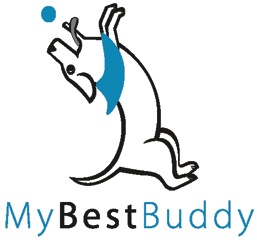By: Companion Animal Psychology
Although we love our canine friends, many dogs have a relatively boring life in which they spend a lot of time hanging around the house or yard, perhaps on their own. Dogs that are bored or under-exercised can easily find their own entertainment, which might not be so pleasing to their human companions. Luckily there are many easy ways to add enrichment to our dog’s lives.
Although we love our canine friends, many dogs have a relatively boring life in which they spend a lot of time hanging around the house or yard, perhaps on their own. Dogs that are bored or under-exercised can easily find their own entertainment, which might not be so pleasing to their human companions. Luckily there are many easy ways to add enrichment to our dog’s lives.
Walks: If you are one of those people who walks your dog whatever the weather, you may be surprised to learn that not everyone takes their pooch for walks. Estimates vary, but a recent meta-analysis found that only 59% of dog owners walk their dogs (Christian et al 2013). The obvious benefit is physical exercise for both dog and human. Remember to allow for sniffing time, because dogs like to spend time ‘reading’ all the local news with their nose.
A less obvious reason to take your dog for walkies is that it provides ongoing socialization, as the dog has the chance to observe or interact with other people and dogs. It’s also been shown that walking the dog is a good way for people to make friends (Wood et al 2015).
If you like you can up the pace by taking your dog along when you go on a bike ride, or take up dog sledding, skijoring or canicross.
Food Toys: These are an easy way to make the provision of food more interesting for your canine friend. There are many excellent toys to choose from, including Kongs, Kong Wobbler, Nina Ottosson toys, Slo-Bowl feeders, and many many more. Some are designed for treats while others are suitable for a whole ration of kibble.
A small study of feeding enrichment toys (the Kong Extreme) for dogs kept in kennels (Schipper et al 2008) found they increased exercise and appetitive behaviours, and decreased barking.
Chew toys: Dogs love to chew and if they don’t have chew toys available then they might decide to chew on some of your items instead. So it’s better to teach them to chew their own toys.
Dogs can lose interest in toys over time (Pullen, Merrill and Bradshaw 2012), so it’s a good idea to give them new toys from time to time, have toys out on rotation, or play with the toy yourself to make it seem more interesting again.
 Hanging out with canine friends: Many dogs are social creatures, and enjoy spending time with their canine friends, or even making new friends. This can be as simple as going for walks with a friend who also has a dog, to going to the dog park or letting your dog spend time at doggy day care.
Hanging out with canine friends: Many dogs are social creatures, and enjoy spending time with their canine friends, or even making new friends. This can be as simple as going for walks with a friend who also has a dog, to going to the dog park or letting your dog spend time at doggy day care. However, not all dogs are social. If your dog prefers not to meet other canines, find ways for him or her to have nice times outdoors without having to interact with other dogs.
Swimming: Some dogs love to swim, and again this is good for physical exercise too. There may be ponds or lakes near you that are safe and suitable for swimming, or you might have a canine swimming pool nearby where your dog can take swimming lessons or go for physical therapy. A recent study by Tavares et al (2015) found that some Labradors will choose to spend time in the water over interactions with another dog, and suggests that the opportunity to swim may even be important for their welfare.
Sports and hobbies: These days there are many options for classes to try with your dog, including agility, obedience, flyball, nose work, Triebball, dock diving, and so on. Many people say they find that dog sports improve their bond with their dog, and that they love meeting fellow dog-lovers through these activities (Farrell et al 2015).
Training for rewards is another way to engage your dog’s brain. It’s easy to get started and you can train on your own at home, or take your dog to class (make sure it is a class that uses positive reinforcement, as there are no standards in dog training). See our first post in the ‘Make your dog happy’ series for more information.
Read the entire article
Like Us on Facebook
Follow on Twitter







No comments:
Post a Comment